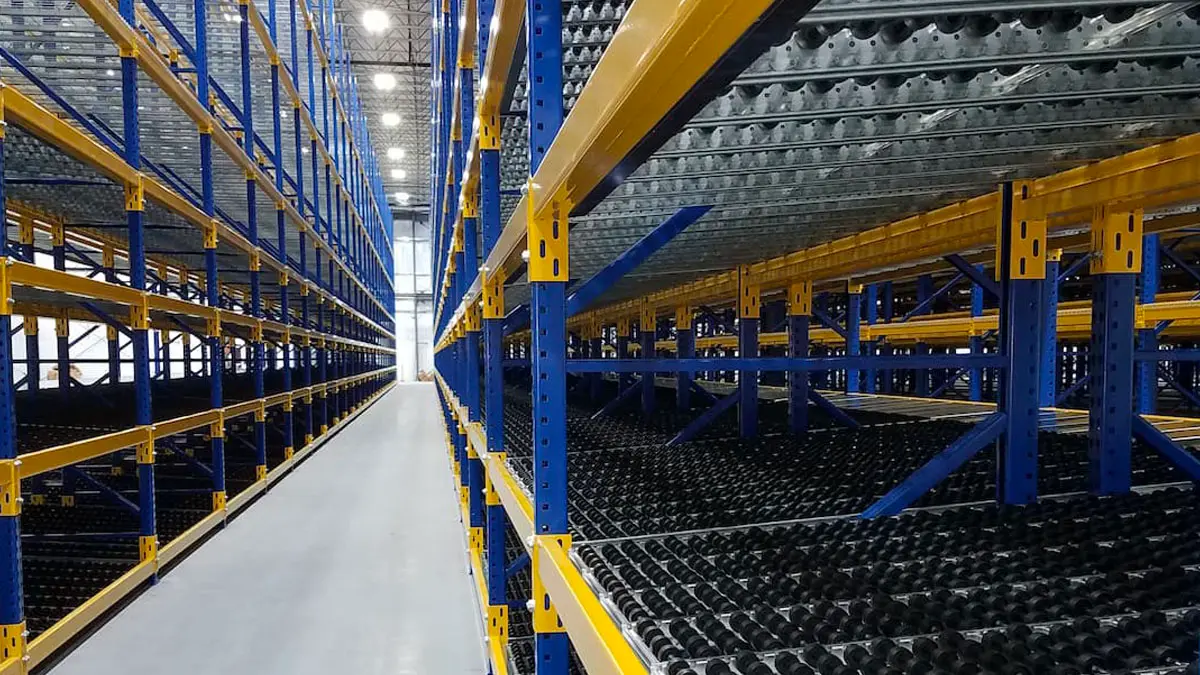
Understanding Selective and Pushback Rack Systems for Warehouse Storage
Warehouse storage solutions play a significant role in optimizing space and improving efficiency. Among the various rack systems available, selective and pushback rack systems are two of the most widely used options. Both systems have unique advantages, making them suitable for different storage needs. In this blog, we will explore each system’s features, benefits, and ideal rack applications to help you determine the best solution for your warehouse.
Selective Rack System
What is Selective Racking?
Selective racking is the most common type of pallet racking system. It provides direct access to each pallet stored on the rack. It consists of upright frames and horizontal beams, allowing forklifts to retrieve pallets from either side of the aisle.
Key Features:
- Cost-effective and easy to install
- Direct accessibility to every pallet
- Adjustable shelving to accommodate different pallet sizes
- Compatible with most forklift equipment
Ideal Applications:
- Distribution centers
- Food and beverage industries
- Retail storage
- Cold storage facilities
Benefits of Selective Racking:
- Cost-Effectiveness: Requires minimal initial investment and is easy to expand as your warehouse storage needs develop.
- Accessibility: Ensures quick and easy retrieval of merchandise, reducing loading and unloading times.
- Versatility: Appropriate for warehouses with an abundance of SKU varieties and fluctuating inventory levels.
- Better Inventory Management: Supports First-In, First-Out (FIFO) inventory rotation, making it the best rack system for perishable goods.
Pushback Racking System
What is Pushback Racking?
Pushback racking is a high-density storage system that allows pallet storage on inclined rails. Each pallet is loaded onto a nested cart that moves forward when a new pallet is added, ensuring efficient use of space while maintaining accessibility.
Key Features:
- Last-In, First-Out (LIFO) inventory system
- Utilizes a series of nested carts that slide back when a new pallet is added
- Offers high storage density compared to selective racking
- Fewer aisles are required, maximizing warehouse storage space
Ideal Applications:
- High-volume distribution centers
- Automotive and manufacturing industries
- Warehouses with restricted floor space
- Bulk storage for non-perishable goods
Benefits of Pushback Racking:
- Enhanced Safety: Since forklifts do not enter the racking system, there is less risk of damage to racks and stored products.
- Maximized Storage Space: Increases pallet positions by allowing multiple pallets to be stored in a single lane.
- Reduced Handling Time: Forklifts only need to enter the first lane position, reducing travel time and increasing efficiency.
- Adaptable Storage: Accommodates multiple SKUs in a single system while allowing easy access to frequently moved products.
When deciding between Selective and Pushback racking, consider the following factors:
Factor | Selective Racking | Pushback Racking |
Inventory Rotation | FIFO (First-In, First-Out) | LIFO (Last-In, First-Out) |
Storage Density | Low to Medium | High |
Accessibility | Direct access to each pallet | Limited access to rear pallets |
Space Efficiency | Requires more aisles | Reduces aisle space |
Ideal for | High SKU variety, fast turnover items | Bulk storage, fewer SKUs |
Selective and pushback racking systems offer significant advantages, but the right choice depends on your warehouse’s needs. Selective racking is best for warehouses that require direct access to each SKU, while pushback is ideal for maximizing storage density and handling bulk inventory.
Are you looking to optimize your warehouse storage? Contact Tri-R Installation today for expert guidance on choosing and installing the best racking system for your business. Our team of warehouse storage experts will help you modernize your warehouse operations and boost efficiency. Our all-inclusive warehouse installation services are customized to meet your distinctive space requirements and company goals.
